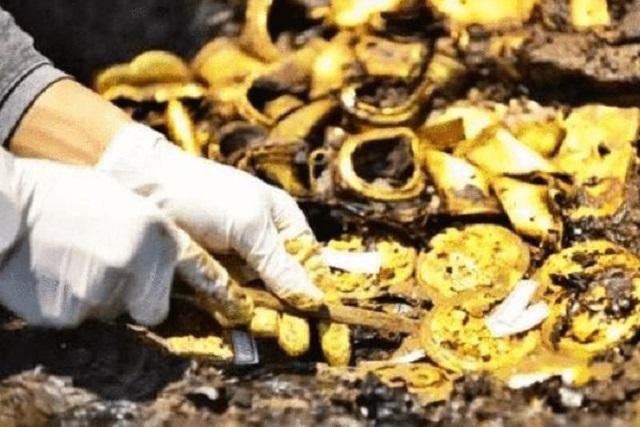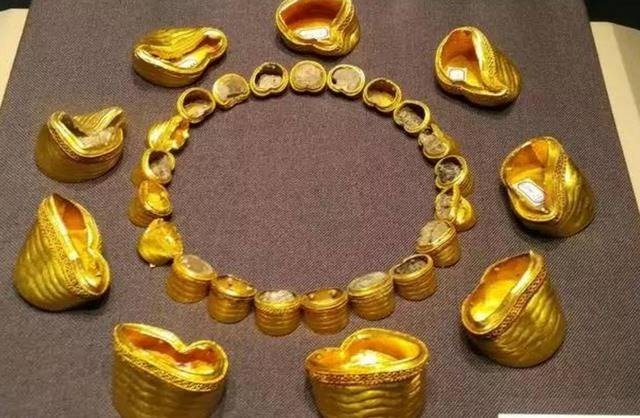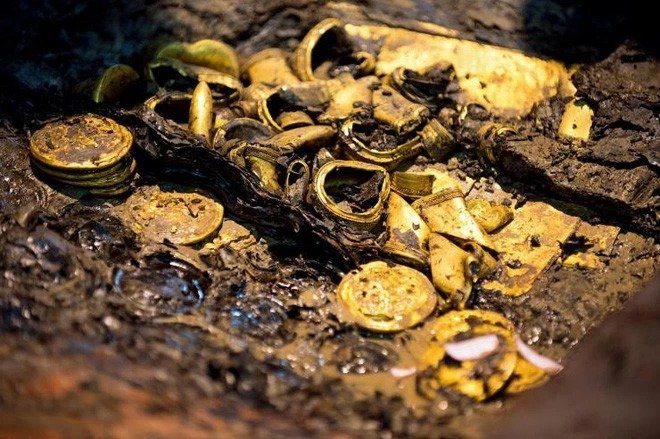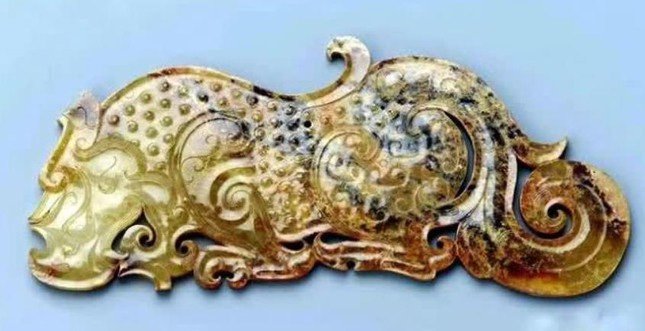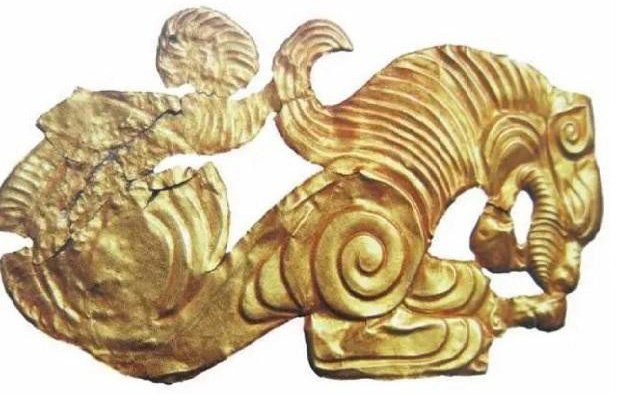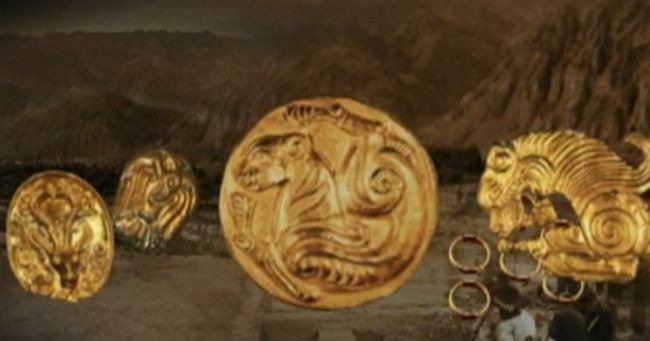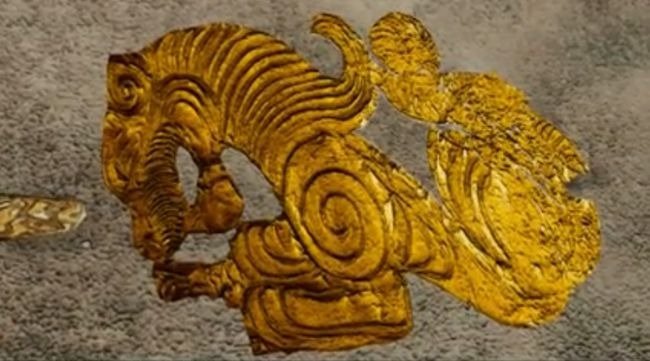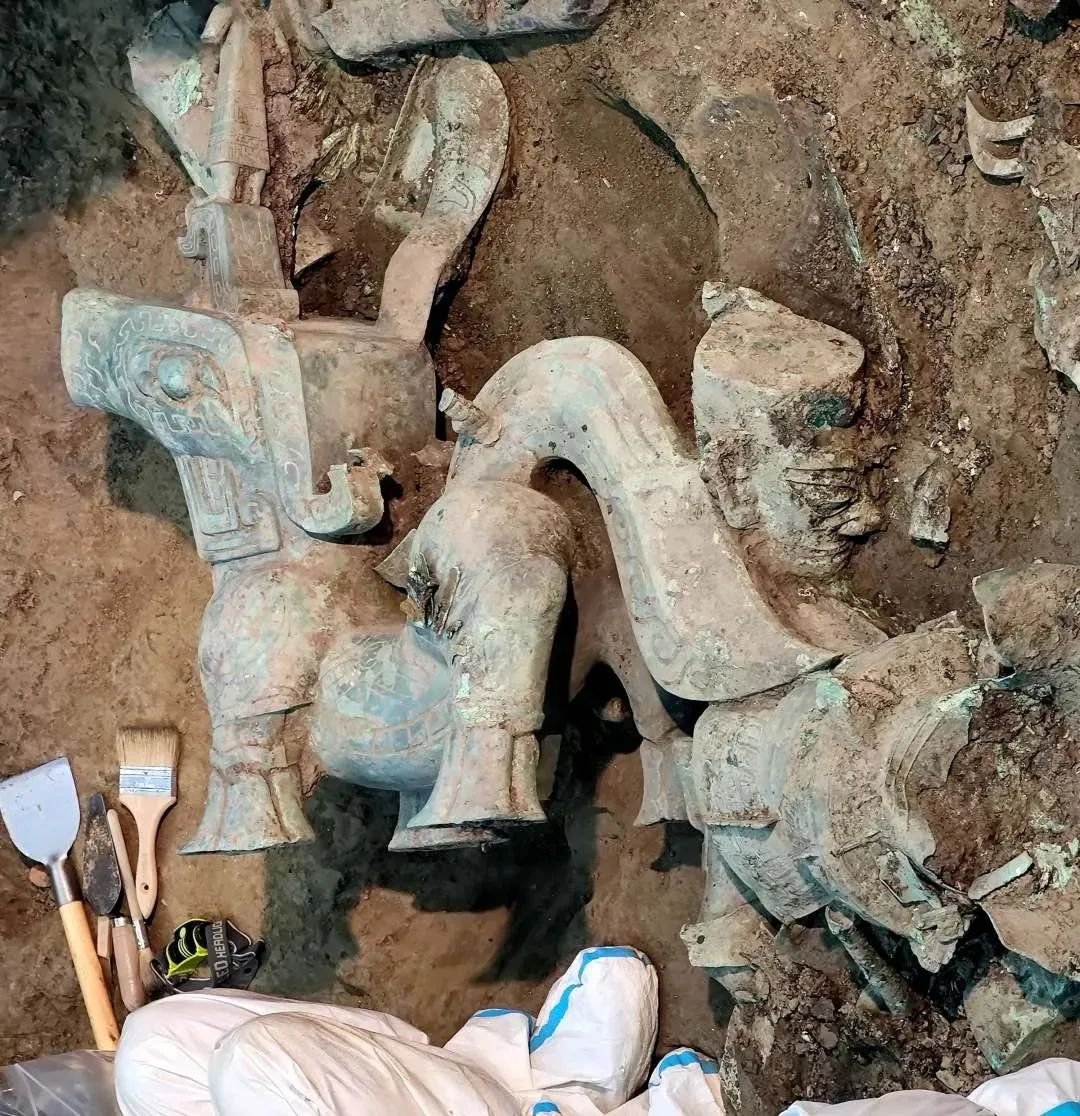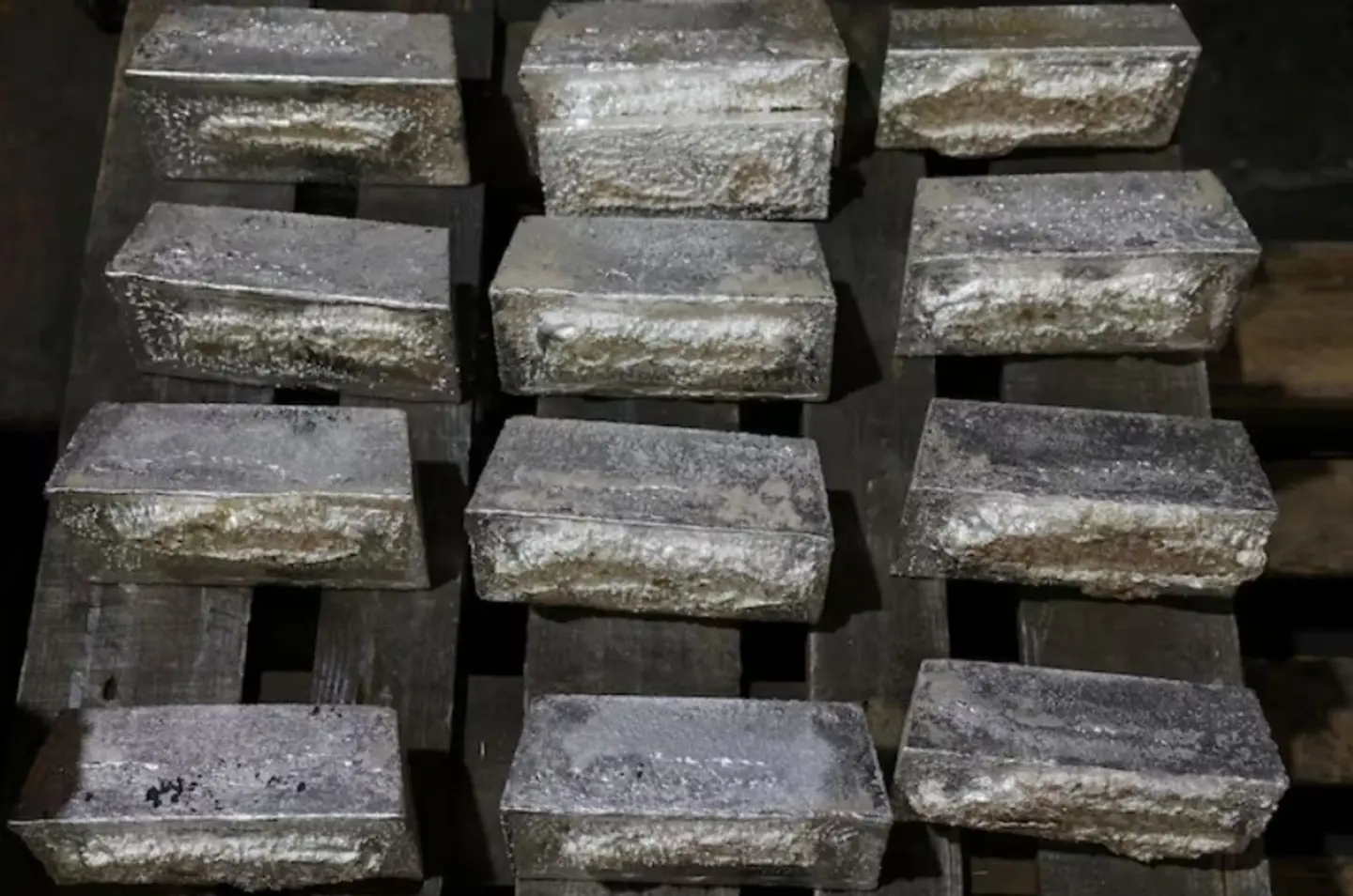Back in 1885, workers busy renovating the Church of St. Mary and St. Eanswythe in England chance upon an unexpected remnant of the past. And the find is grisly, to say the least. Concealed inside a box are human remains – ones that some believe could solve a centuries-Ancient Mystery surrounding a medieval saint. As it happens, though, another 100 years will pass before the truth finally comes out.
Scientists Have Uncovered Ancient Roman Statues With Some Wild Details
The archaeologists in England looked down at the ground and were shocked by what they saw. They've been working on a huge project for years, and now it looks like their hard work has paid off. In the dirt beneath their feet, a set of haunting figures look up at them. This is a sight that will stay with them forever.
Archaeologists found Roman statues with some strange details. These archaeologists were called in after a new rail line was approved. The HS2 route will connect London to cities in the north of England. Problems and controversies have plagued the project, but plans have been made. Rewritten spending has been higher than expected and strong opposition to the project has grown. It would be a stretch to say that the HS2 project has gone smoothly, but one group may have benefited because the rail line will go through large areas of English land. Archaeologists were asked to dig up areas that might hold important artifacts before they were lost forever.
In the end, the scale of these archaeological works was unlike anything that had ever been done before. Since 2018, more than 1,000 archaeologists have been working on this huge project, the largest single archaeological project ever to take place in the United Kingdom.
12 Most Amazing Archaeological Finds Scientists Still Can't Explain
We'd hate to live in a world where everything could be explained, and nothing contained any mystery. Mysteries appeal to the imaginations of all of us. Without mysteries, we'd be bored! We all love to have problems to solve, but the problem-solving process can be a frustrating one if the answer never comes. That feeling of frustration is what scientists encountered when they examined these archaeological discoveries!
Excavating the 'National Treasure' 1 ton golden lion in the ancient tomb and the mysteries that surprised archaeologists
The 2,000-year-old tomb discovered at the Xinjiang archaeological site (China) has stunned archaeologists because there are countless treasures belonging to the "national treasure" category, including a golden lion weighing up to 1 ton. , according to KK News.
The Xinjiang South Railway plays a very important role in the transportation system in the Xinjiang region of China. It starts from Turfan, passes through Yuergou, Korla (Kurla) and Kashgar.
It is worth mentioning that, 45 years ago, when railway workers built Yuergou station, they discovered a series of ancient tombs of different sizes. Among these tombs, there is a more special one. It contained countless gold national treasures, including a golden lion weighing up to 1 ton, which shocked the whole country and even the world.
During the construction of the railway station in Yuergou, Xinjiang, archaeologists made a priceless discovery.
Priceless treasures in the "Golden Tomb"
Archaeologists have discovered a tomb filled with gold and priceless treasures.
Specifically, in 1976, during the construction of Yuergou station, railway workers dug many ancient tombs. In the first phase, they have unearthed a total of more than 20 large and small tombs, including many bronze and pottery items, but none of them have significant archaeological value.
According to the Xinjiang Institute of Cultural and Archaeological Relics, these ancient tombs belong to the period from the Spring and Autumn Warring States to the Qin and Han dynasties, the owners of the tombs are all ethnic minorities. item.
In the following period, ancient tombs were excavated in the area more and more, amounting to more than 80 tombs. In particular, among these is a very large mausoleum, but the amount of gold and silver and treasures found in this tomb is also countless, it can be said that many have never been seen. And this mausoleum is therefore called the "Golden Tomb".
Gold treasures were discovered in the tomb.
The 'Golden Tomb' is 7.1 meters deep, about 6.56 meters long, and 4.22 meters wide. This is a vertical mausoleum, paved with cobblestone, with a rough and simple shape, reflecting the ancient nomadic way of life. There are 8 gold talismans engraved with tiger images, 4 golden tiger belts, a lion talisman and more than 200 other gold ornaments such as gold beads and gold flowers discovered in the mausoleum.
A lot of gold in this ancient tomb more than 2,000 years old.
There are also gold particles.
The most startling is the 1-ton golden lion card, which is carved lifelike.
The gold plate is extremely delicate.
In addition, archaeologists also discovered unique lacquer "treasures" in the ancient tomb. This is a very important finding because it helps to put an end to the controversy about whether China was capable of making perfect lacquerware during the Warring States, Qin, and Han dynasties.
Unfortunately, the results of the excavation of the "Golden Tomb" have not been made public for various special reasons. However, this makes the public more curious and interested in it.
The mystery of the beauty of the owner of the ancient tomb
The massive amount of treasures in the "Golden Tomb" makes both archaeologists and the public curious about who its owner is and has a special background.
According to the research results of archaeologists, the owner of the tomb may have lived 2,135 years ago, was a female - a beauty who was only about 30 years old when she died.
In particular, there is a hole drilled in the skull of the owner of the tomb. According to archaeologists, this may have been the cause of her death.
A nomadic people in ancient North Asia once used the technique of drilling holes in the skull to cure headaches. Drilling holes in the skull is thought to reduce intracranial pressure to make the headache sufferers more comfortable, but the technique is very difficult, just a little carelessness will cause the patient to die.
Archaeologists speculate that the owners of the ancient tombs may have been the Cheshi or Huns, which are indigenous peoples with a long history in Turpan, with a special preference for hunting dogs, worshiping gold and fond of hunting. gold collection.
However, the materials and patterns in the tomb are also compatible with the Xiongnu nobles, who lived in the area in the later period and also liked gold.
Paleontologists Find Fossil of 119-Million-Year-Old Beaked Bird
Confuciusornis shifan lived in what is now China during the Early Cretaceous epoch, some 119 million years ago.
The new species belonged to Confuciusornis, a genus of extinct crow-sized beaked birds in the family Confuciusornithidae.
Confuciusornis shifan weighed less than 200 grams and was smaller than most other confuciusornithid species.
“Confuciusornithidae is a clade of Early Cretaceous pygostylian birds known from the Jehol Biota of East Asia, and represents the earliest known toothless, beaked birds,” said Shenyang Normal University paleontologists Dongyu Hu and Xing Xu and their colleagues from China and Canada.
“Five genera and eleven species, recovered from the Dabeigou, Yixian and Jiufotang formations, have been described and assigned to this family, though the validity of some species is questionable.”
“They are represented by thousands of exceptionally preserved specimens that collectively provide rich information on confuciusornithid morphology, taxonomy, flight ability, growth, diet, and ecology.”
The nearly complete and mostly articulated skeleton, preserved on a single slab, of Confuciusornis shifan was recovered from the Jiufotang Formation near Xiaotaizi village in the Chinese province of Liaoning.
“Compared to other confuciusornithids, this new species and the recently reported Yangavis confucii both show evidence of stronger flight capability, although the wings of the two species differ from one another in many respects,” the researchers said.
“Our aerodynamic analyses under phylogeny indicate that varying modes of flight adaptation emerged across the diversity of confuciusornithids, and to a lesser degree over the course of their ontogeny, and specifically suggest that both a trend towards improved flight capability and a change in flight strategy occurred in confuciusornithid evolution.”
“Confuciusornis shifan differs most saliently from other Mesozoic birds in having an extra cushion-like bone in the first digit of the wing, a highly unusual feature that may have helped to meet the functional demands of flight at a stage when skeletal growth was still incomplete,” they concluded.
“The new find strikingly exemplifies the morphological, developmental and functional diversity of the first beaked birds.”
Massive 3,000-Year-Old Mythical Bronze Creature Unearthed in China
A large mythical creature cast in bronze, among other relics, was found Wednesday at Sanxingdui, an archaelogical site in southwest China. The artifact, weighing 330 pounds with a length and height of 3 feet, is the largest and most complete animal-shaped bronze unearthed at the site.
The massive animal has a sacred tree engraved on its chest and a horn on its head with a bronze statue of a man standing on it. The figure’s thin frame is clothed in a long robe. Archaeologists believe the man might be trying to control the mythical creature.
Sanxingdui is a Bronze Age site in the Sichuan region of China. It was first uncovered in 1986, though locals had found evidence of ancient cultures there as early as 1927. The site has been linked with the ancient kingdom of Shu, which existed up until 316 B.C.E. The most important finds at the site center around a series of sacrificial pits filled with thousands of gold, bronze, jade, and other artifacts.
“Since the first excavation at Sanxingdui in 1986, the unearthed mythical beasts have been smaller in size, only about 20 to 30 centimeters long,” Zhao Hao, a team member from No. 8 pit’s excavation, told China Global Television Network. “The tree is engraved directly on it and can be seen as Sanxingdui people’s worship of the sacred tree, or has taken the sacred tree as a kind of divine presence.”
Of the roughly 14,000 artifacts uncovered at the 3,000-year-old sacrificial pits at Sanxingdui, this artifact is the first of its kind.
The work of archaeologists excavating sacrificial pit No. 8 is expected to be completed between late September and early October. The team plans to focus subsequent efforts on research and restoration.
Excavations at Sanxingdui have yielded a number of rare finds, including a bronze box and altar, and two millennia-old gold masks within the last year alone.
Perfectly preserved lion cubs that died 44,000 years ago ‘after being abandoned by mum’ found in Siberia
‘Male siblings born 44,000 years ago’ found ten metres apart in Yakutia but the truth is rather different – amid hopes to bring species back to life. The pair of cubs were believed to be siblings both born 44,000 years ago.
In fact, one of the famous extinct cave lions named Spartak has been found to be female, not male, and will need to be rechristened as Sparta. And she was born 18,000 years after the cub found next to her named Boris, it now emerges.
Complete restoration works on the baby cave lions, preserved superbly in the Siberian permafrost, reveals a sensational level of pelt and hair preservation. Some 26,000 years ago Sparta’s mother either left her in the cave and went hunting, or was killed herself, leaving the tiny cub without food.
‘She starved to death. We wondered why she looked so skinny when she was found, and then tomography of her internal organs showed there was no fat,’ said scientist Dr Albert Protopopov, an expert in frozen remains from the woolly mammoth era.
‘It was the most extreme stage of starvation.’
Sparta was found in the Yakutia region in 2018 by the same mammoth bone hunter who discovered a bigger cave lion cub called Boris a year earlier.
They were just ten metres apart.
The first theory was that the cubs must have been from the same family – but now scientists know that the cubs are separated by 26,000 years. Boris lived some 44,000 years ago and was aged between two to three weeks when he died. Most likely his death came when his mother left him inside a cave, went hunting and the cave rock collapsed, burying the cub.
‘We found visible traces of internal injuries which we believe could have been caused by a rock falling on him’, Protopopov said. The most important task of this complex research on the cave lion cubs is to restore their appearance.
‘It is still an enigma, in that on hundreds of published drawings of cave lions they are depicted without manes. Yet we notice spots and stripes of pigmentation in that area… which are not seen in modern-day lions. So we are moving towards re-creating the way the cave lions looked.
‘Their living conditions were very different to modern lions in that cave lions lives in a much colder climate and we believe therefore had to look different.
‘There was less prey in cold climate.
‘If we understand this question about mane we might get an idea of their social hierarchy – for example, we don’t know if they created prides with alpha males and several females alike to modern lions.’
Tests are underway on the lions to extract as much information as possible. The cave lions were the largest predators after bears in ancient, and in the area where we find skulls of cave lions, there is only a handful of bear skulls. Lions reigned in ancient Siberia because at the time it was savanna, bears needed more woods.
‘Cave lion cubs are superbly preserved, you can even see their whiskers, and we are hoping to fetch a lot more information from them.’
The scientist predicted: ‘There is a very realistic chance to recreate cave lions and it would be a lot easier than to clone a woolly mammoth.
‘Cave and modern lions separated only 300,000 years ago, in other words, they are different species of the same genus.
‘It means that we can take the DNA of the modern African lion and use it to recreate cave lions.
’It would be a lot easier than the mammoths.
‘But if we find methods to bring back woolly mammoths it would be a revolution and a payback by humans who helped extinguishing of so many species.’
Boris, the older cub, has a severed tail.
This led to speculation he was an ancient lynx, not a cave lion.
‘We were all worried by the lack of a tail on Boris,’ said Dr Protopopov.
‘But the man who found him explained that it got cut off when the cub was taken out of the permafrost.
‘I know it raised suspicion that the lion cub was in fact a lynx, but we know from the very first tests that this was clearly a cave lion cub.’
Exploring the Great Pyramid Mission & the future of Egyptology
The history of scientific experiments conducted on the pyramids of Egypt is fraught with controversy. Fortunately, advancements in non-invasive technologies such as muography are allowing us to get a better understanding of the pyramids than ever before.
In 2017, the ScanPyramids mission shocked the world with the announcement of the ‘Big Void’ within the Great Pyramid of Giza. This empty space is enormous, nearly equal in size to the Grand Gallery and sits above it in relatively vertical alignment.
After this unprecedented discovery, the Exploring the Great Pyramid mission was launched to follow up on this discovery. Still in the planning stages, the EGP mission may allow a 3D visualization up to 100x greater detail than previous scans.
However, entrenched interests within Egyptology do not have a great track record of sharing fame and recognition with outsiders. Can the EGP mission overcome the doubt and adversity that previous missions have faced?
Was the Sarcophagus in the Pyramid of Khafre Sabotaged?
The pyramid of Khafre contains many mysteries, despite being in the shadow of the Great Pyramid of Giza. When examining the sarcophagus in this pyramid, an enormous question is brought to light.
How on earth was this sarcophagus opened without destroying it?
The discrepancy between the security defenses of the pyramids of Khufu and Khafre are highly conspicuous, and further add to the intrigue of why certain decisions were made.
Did looters expertly attack Khafre’s coffer with unparalleled precision… or was something else afoot when the pharaoh was laid to rest?
12 Most Mysterious Archaeological Finds Scientists Still Can't Explain
There are a lot of gaps and guesses in our history books. Our historians have done the best they can with the information they have, and archaeologists help them with that by supplying them with as much information as they can about the things that they find. The problem with that arrangement is that archaeologists are sometimes mystified by the things that they discover, as we’re about to see with the amazing and enigmatic finds in this video!
How did the Ottomans conquer the Balkans and Asia Minor? - History of the Ottoman Empire (1299-1400)
In today’s video we are discussing how the Ottomans conquered the Balkans and Asia Minor. Watch the video and enjoy!
Archaeologists have found the home of 40 skeletons buried in giant jars 1,700 years ago in Corsica
Archaeologists in France have uncovered a massive cemetery containing 40 tombs dating from the first half of the first millennium.
Bodies were discovered inside of amphorae, or large jars, from Northern Africa.
The site, on the island of Corsica, is being called a necropolis, taken from the ancient Greek for 'city of the dead.'
Corsica passed under the control of many different civilizations in the first half of the first millennium.
While artifacts found in the excavation appear to be of Roman origin, experts caution they could have been repurposed by Visigoths or later inhabitants.
Archaeologists with the French National Institute of Preventive Archaeological Research (INRAP) made the discovery in Ile-Rousse, a town on Corsica's western coast.
A sleepy fishing village that's becoming something of a tourist attraction, Ile-Rouse dates to the mid-18th century, but the excavation provides more details on the area's ancient inhabitants.
It's been occupied for at least 6,000 years, but 'the archaeological indications of previous occupations were rare and fragmentary,' INRAP said in a statement.
A dozen tombs were first discovered in spring 2019, but excavation in February and March uncovered dozens more, with 'great diversity in their architectural style,' the institute said.
Researchers began excavating two 6,500-square-foot sites in the center of town.
They uncovered amphorae, which were often used to import olive oil, wine and other goods, across the Mediterranean from Carthage, now known as Tunisia, between the 4th and 7th centuries.
The large vessels served a second purpose here, the institute said, as 'receptacles for the deceased.'
Typically amphora were only used to bury children but the researchers found adults had been entombed, as well.
The remains of 40 individuals were uncovered in all, buried some time between the 3rd and 6th centuries.
The necropolis was discovered right behind Ile-Rousse's parish church, the Church of the Immaculate Conception, during archaeological surveys conducted in anticipation of an upcoming construction project.
Some of the tombs were covered with terracotta materials typically used as roof tiling in ancient Roman architecture, but additional analysis needs to be conducted to learn more about the identities of the deceased.
According to INRAP, the Romans did occupy Île-Rousse—then known as Agilla—during the time period to which the jars have been dated, but later settlers could have reused them after the Romans departed.
The first half of the first millennium was a period of great instability for Corsica, which represented a small but strategic outpost for anyone trying to control Mediterranean sea lanes.
The island was under Carthaginian rule until 240 BC, when they were supplanted by the Romans. In 410 AD, it passed to the Visigoths, who renamed Agilla as Rubico Rocega.
It then was controlled by the Vandals and Ostrogoths, before becoming part of the Byzantine Empire in 536 AD.
How that turmoil affected the area, 'has always been a mystery,' according to the site Ancient Origins.
'While it was believed the area was largely deserted, the discovery of the impressively populated Corsica necropolis raises the possibility that population density in the area during the mid-first millennium was greater than had been imagined,' the institute said.
Given that such necropolises were usually associated with houses of worship, there may be a great deal more to uncover.
The Lost City Of Knowledge: What Life Was Like In Ancient Alexandria | Metropolis
Alexandria, a royal Greek city in the land of the Pharaohs. Along the sandy banks of the Nile delta on the African Mediterranean coast, the most powerful metropolis of its time rose from virtually nothing. The Hellenistic culture mingled with the legacy of the Pharaohs and bore the fruits of a glorious new heritage.
Africa: Zulu Empire - The Wrath of Shaka Zulu
Shaka sought vengeance for Dingiswayo on Zwide and the Ndwandwe. He expanded his control over the Mtethwa and other tribes, then launched his assault on the Ndwandwe. Shaka scored two crushing victories over the course of an eighteen month war, although Zwide escaped both times. Shaka invaded the main Ndwandwe village, capturing Zwide's mother and burning her to death in place of her son. Shaka had won the war, but the people he pushed out created a ripple of instability across Africa: the Mfecane or the Crushing. Shaka himself became dangerously disturbed when his mother died and he began to take his grief out on his people.
His brothers assassinated him to take the throne, leading to a new king: Dingane. Dingane began to treat with the Dutch colonists in South Africa, but what began as a friendly relationship became a betrayal when he turned on them. Dingane attacked their wagon train at the Battle of Bloody River, but the Dutch with their guns held him off. The Dutch then threw their support behind Dingane's last surviving brother, Mpande, who successfully overthrew him and became the new Zulu king.
When Experts Researched Fossilized Dinosaur Eggs, They Discovered Amazing Secret Inside Their Shells
Before the asteroid that wiped off the dinosaurs, millions of years ago, a protoceratops laid a dozen eggs in what is now known as the Cretaceous Period. But no one knew what would become the Gobi Desert of Mongolia. The eggs never hatched and instead became frozen in the mists of time eventually against all odds they were found by scientists and made their way to the American Museum of Natural History in New York. In 2017 experts used a new method to look closely at the eggs their discoveries tell us more about the past mass extinction event that killed off these creatures in the past.
Dinosaur fossils have always been quite interesting, and they're a good source of fresh information for us. However, it's not simply fully developed dinosaurs that have taught us incredible things. In the middle of the 19th century, researchers in Britain discovered the first dinosaur bones. Soon after, these experts speculated that dinosaurs had reproduced in a manner comparable to how reptiles do now. This discovery marked the beginning of paleontology.
However, in 1859, the first fossilized eggs were found. When these fossils were found in France, they were mistakenly thought to be from a type of bird; as a result of this, they were forgotten for a very long time. It would be another 64 years before scientists discovered that the fossils were eggs from dinosaurs Researchers from the American Museum of Natural History were working in Mongolia when they made that discovery. Since then, fossils of dinosaur eggs have been discovered all over the world. Some of the fossils were made after the dinosaurs had successfully hatched, while others told a very different story. In some cases, the tiny remains of developing dinosaurs had even been preserved.
The Biggest Unsolved Secrets From The Ancient World
In the video below we will be exploring the biggest unsolved secrets from the ancient world. Enjoy!
Cave Divers Swam Through A Subterranean “Portal” And Found A Long Forgotten American Land
This discovery has provided historians with a unique perspective on the ancient human populations of the Americas.
Deep in the waters of the Yucatan Peninsula, Sam Meacham and Fred Devos are maneuvering their way through a network of caves. The pair have been under the surface for some time now, having traveled a half-mile or so submerged. But the ordeal turns out to be worth it, as finally they’re faced with a tiny opening in the rock before them. And what lies behind completely astonishes the intrepid divers.
Timeline of the Rulers of Prussia
This video shows every Duke, King and Minister-President of Prussia. Watch it to find out more and enjoy!
A Family In Jerusalem Discovered A Historic Secret Hiding Under Their Living Room Floorboards
In the ancient village of Ein Kerem, now a part of Jerusalem, Oriah and Tal Shimshoni are showing off their renovated home. But as they roll up a rug and open a wooden trapdoor, it becomes clear that this is no ordinary property. Underneath the flooring, an ancient secret is hiding — and a possible connection to the Bible itself.
How the Chinese Defended Against the Mongols - Medieval Documentary
In the following video we will be explaining how the Chinese defended against the Mongols. Enjoy!

